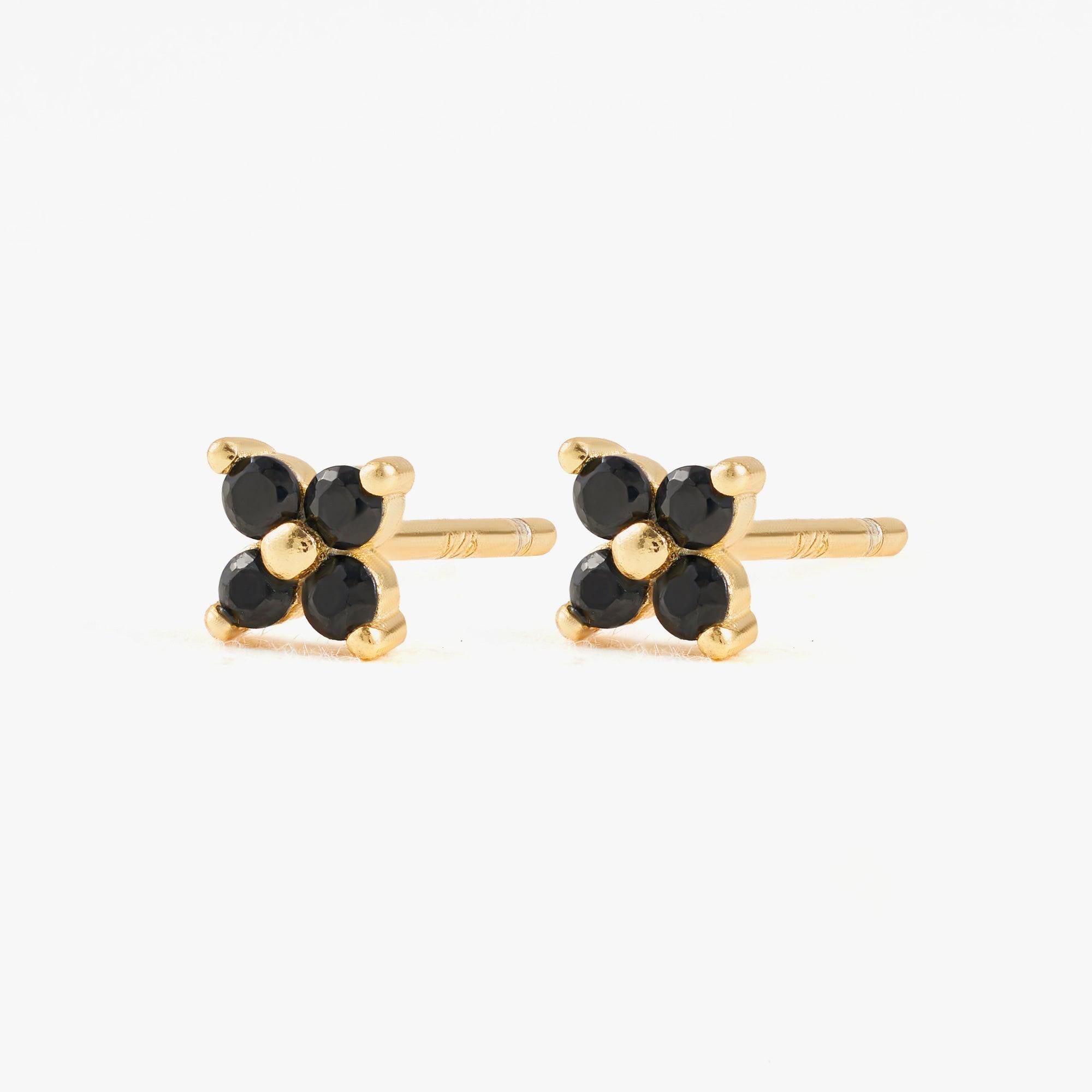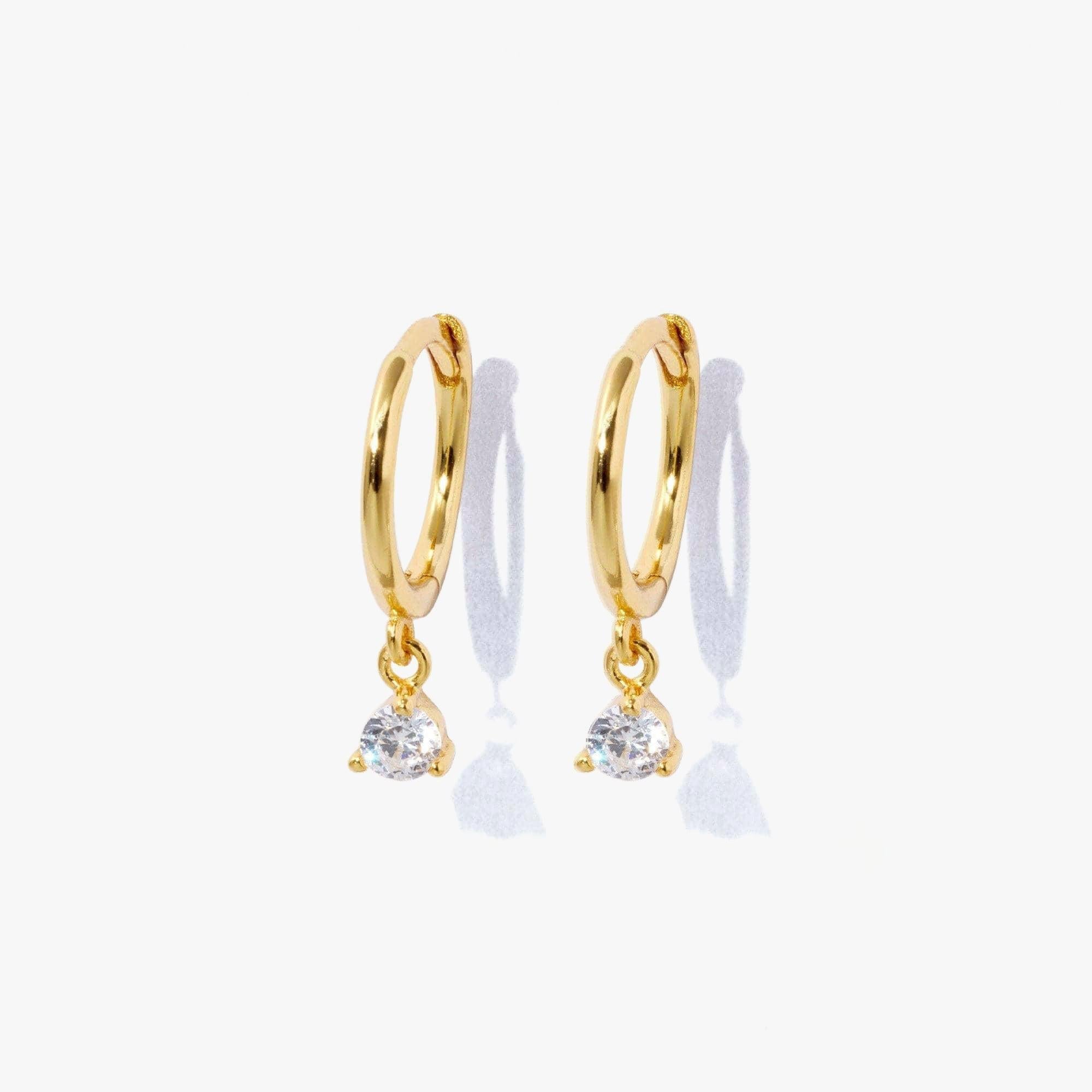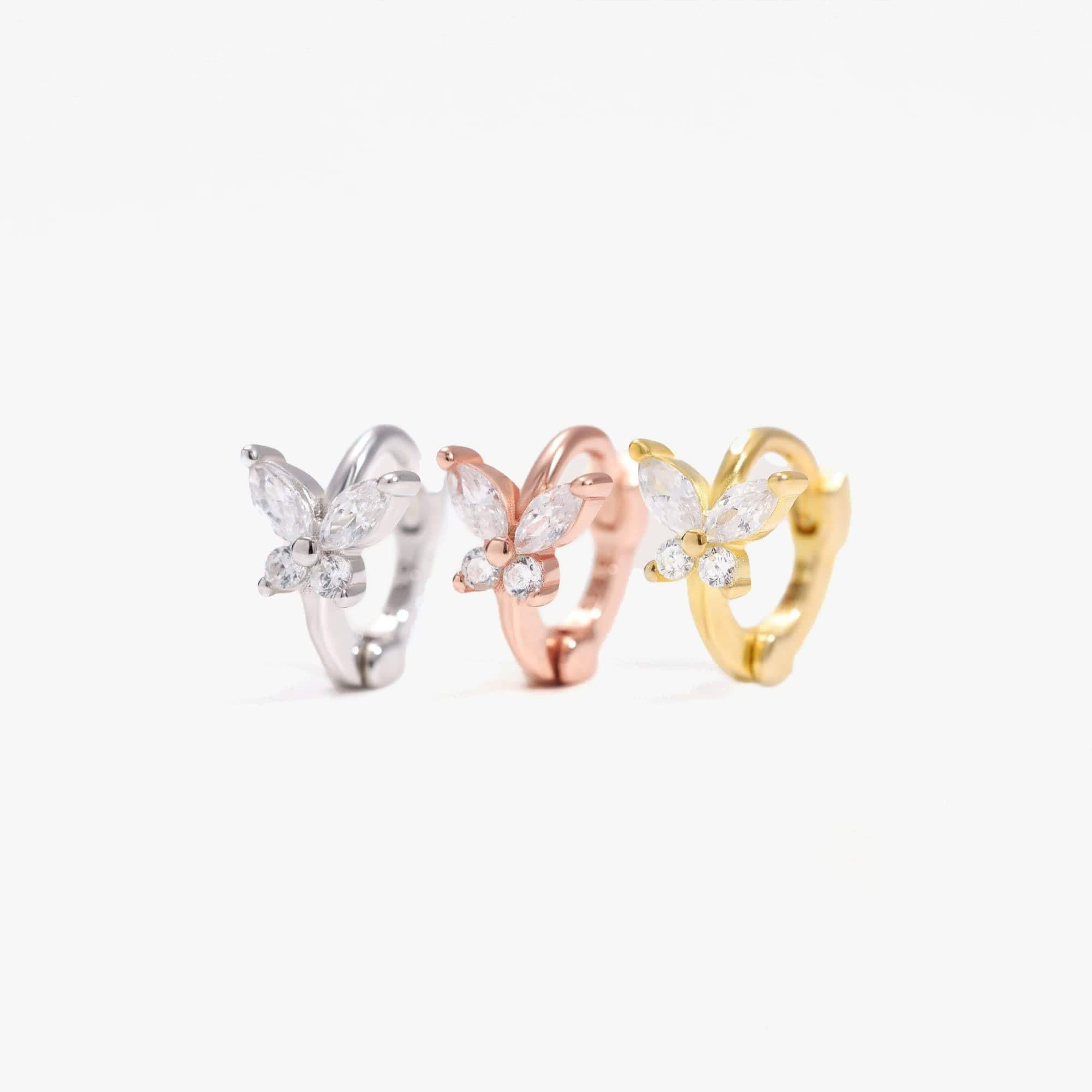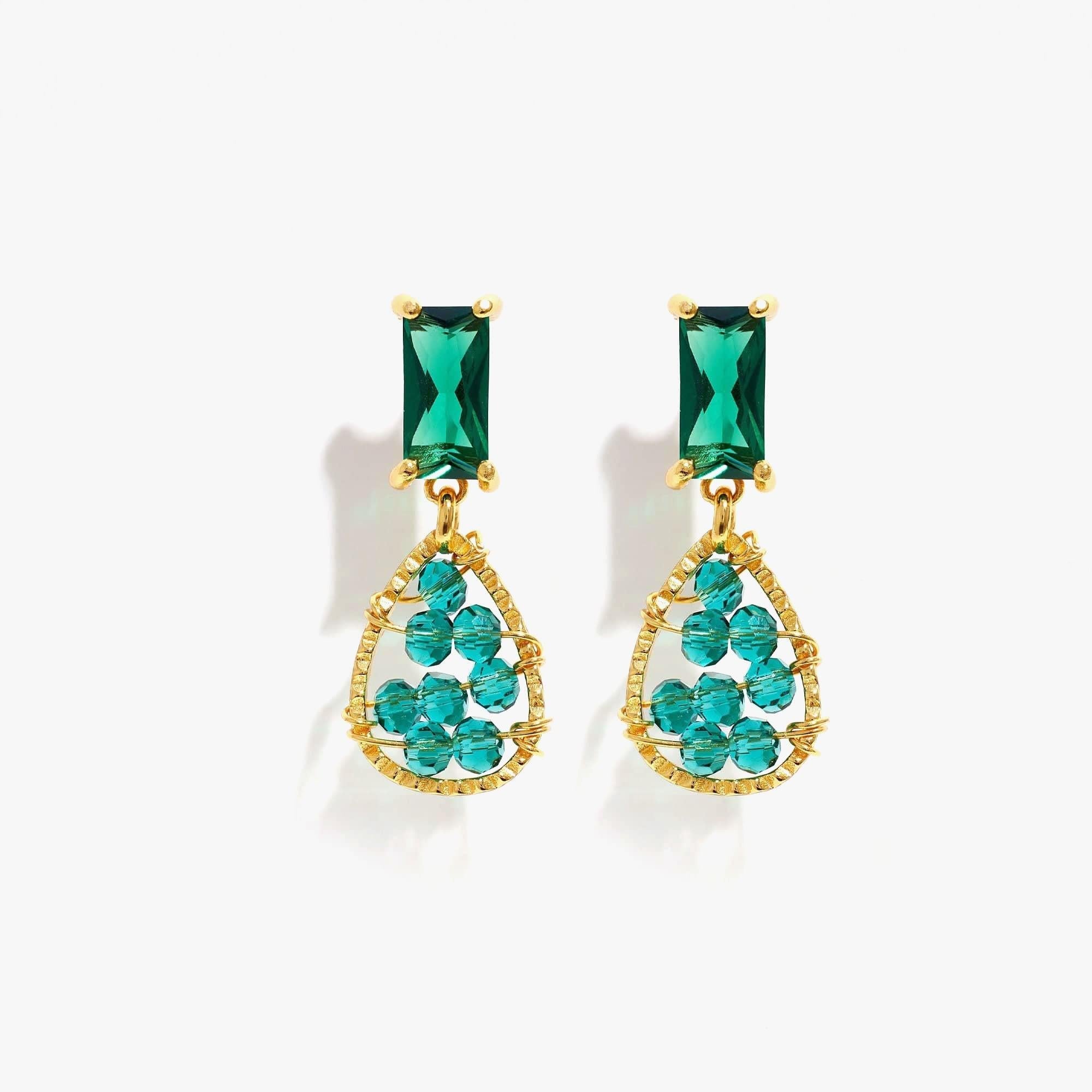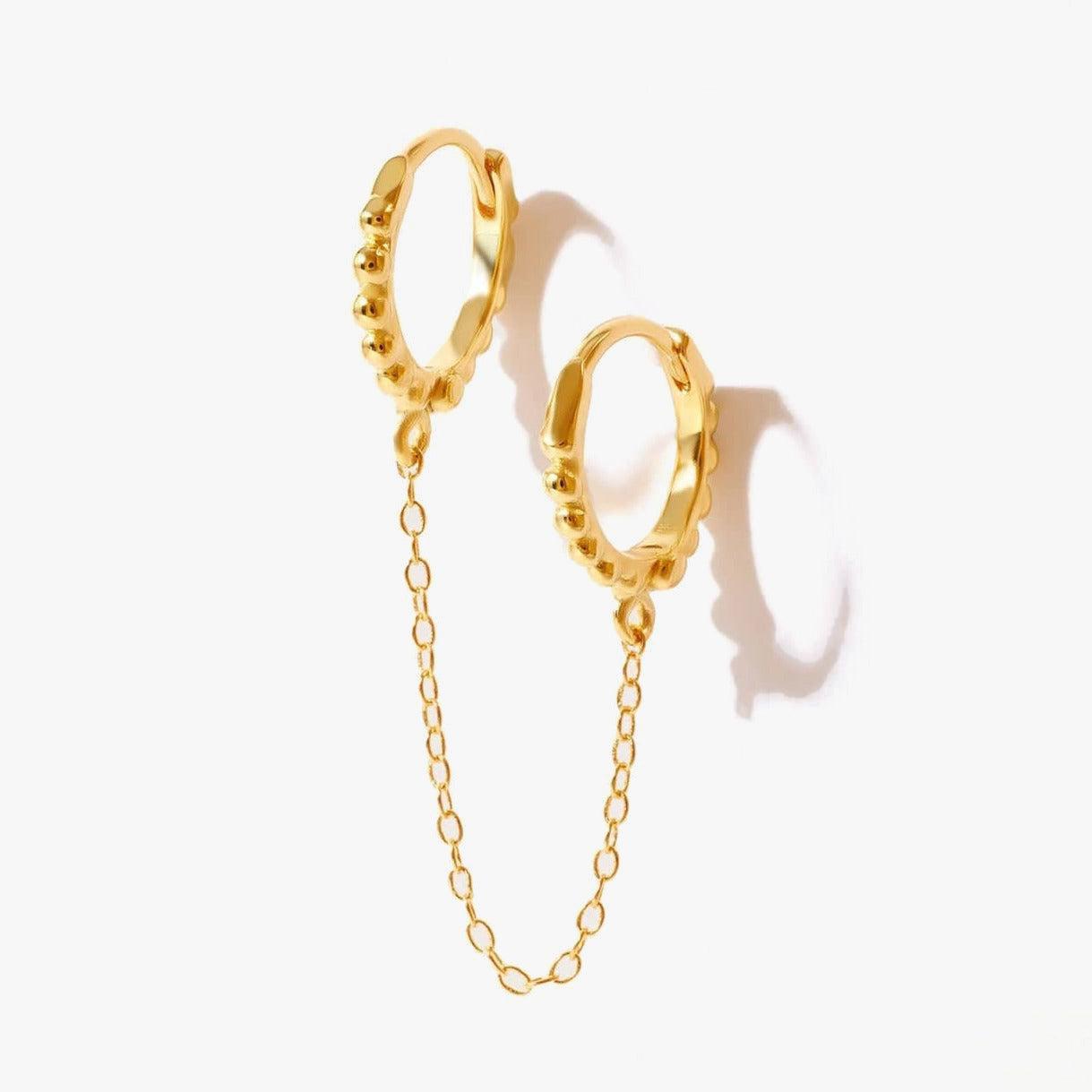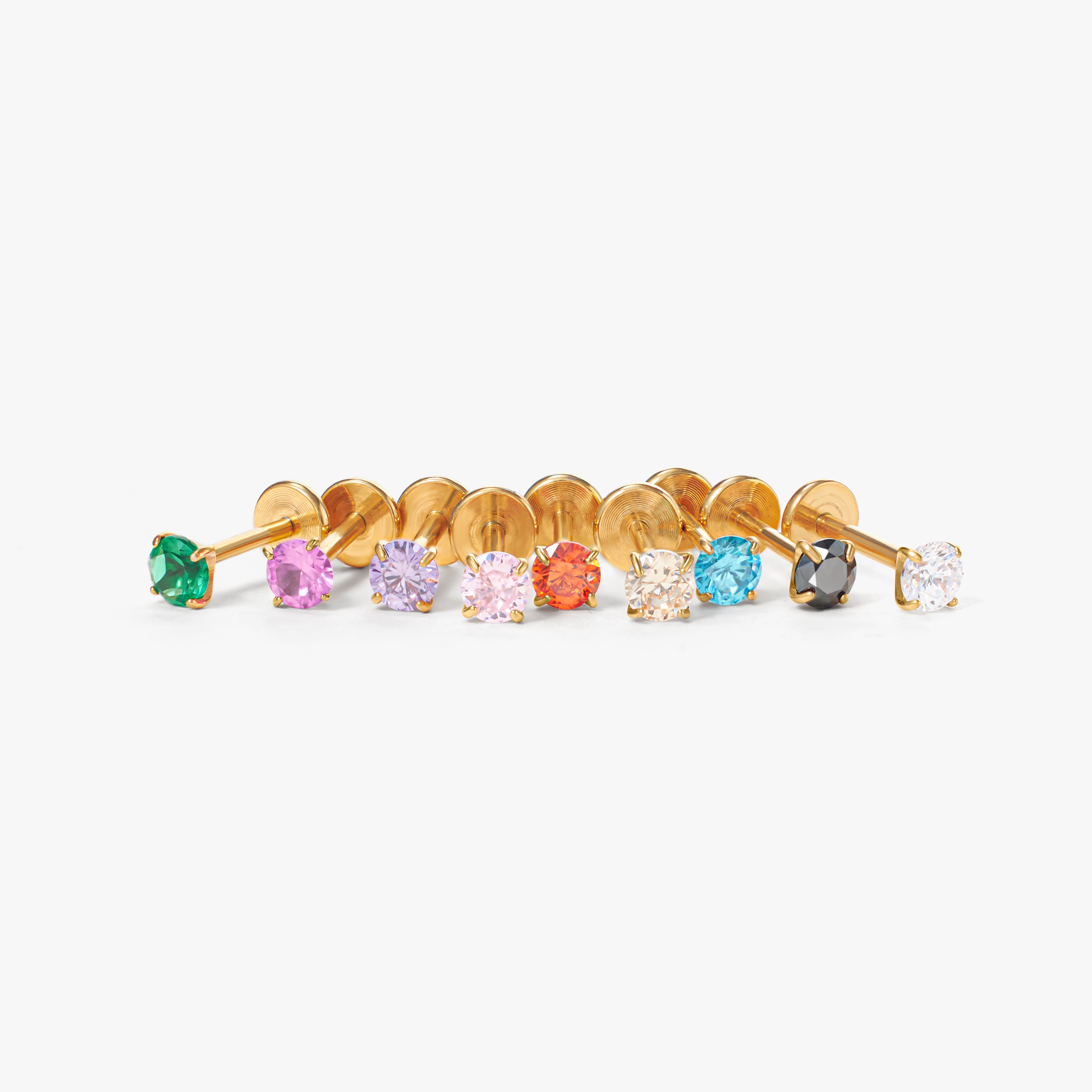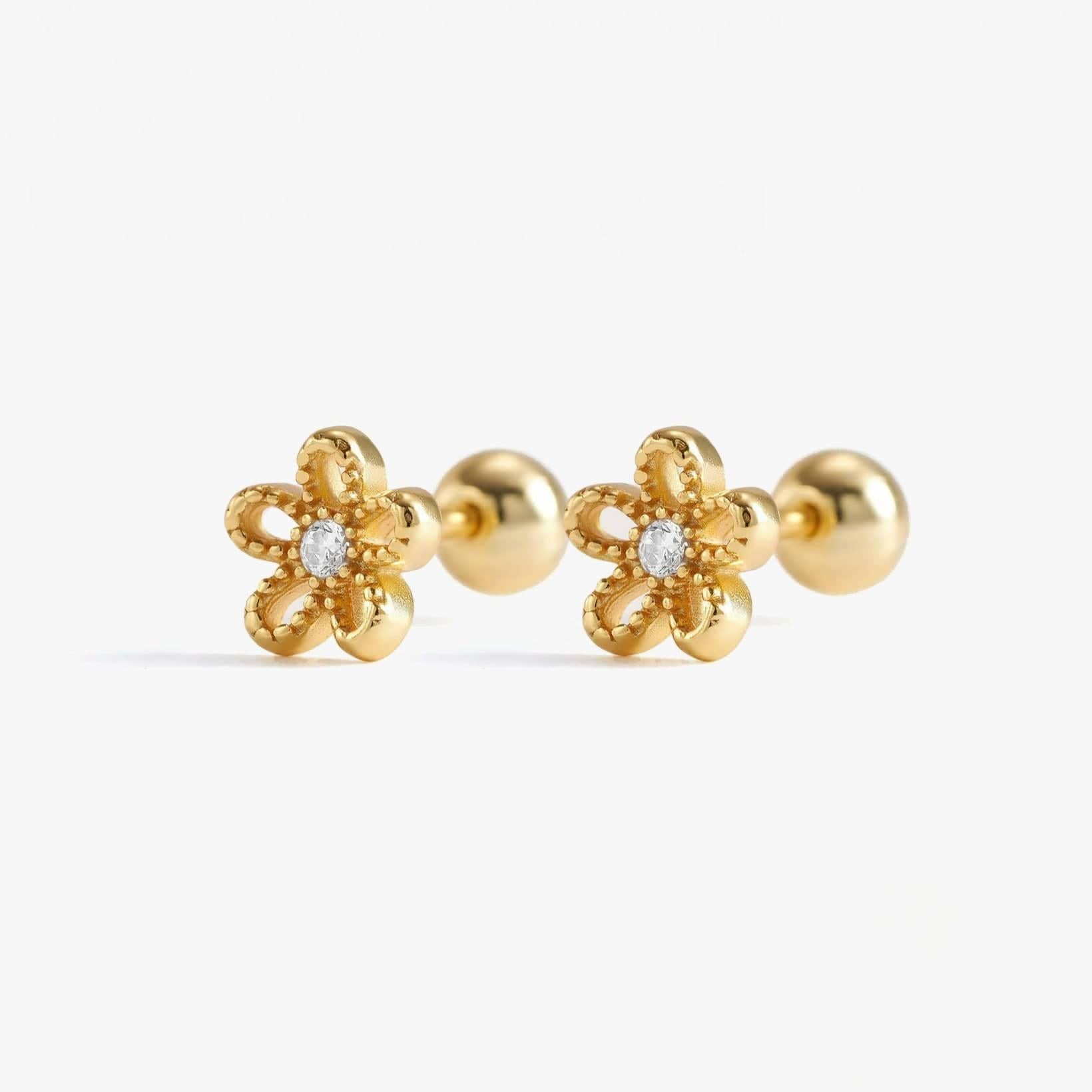Ear piercings have been a popular form of self-expression and today, they’re more diverse and exciting than ever. Choosing the right ear piercing can be both thrilling and a little daunting. Each type of ear piercing has its own unique characteristics, like its location on the ear, how much discomfort you might feel, and how long it will take to fully heal. Understanding these details can help you make an informed decision that matches your preferences. By learning more about different piercings, you can choose one that not only looks amazing but also fits well with your lifestyle and pain tolerance, making the experience enjoyable and rewarding.
What are Ear Piercings?
Ear piercings are small holes made in the ear to wear jewelry, such as earrings. It is a popular form of body art that people of all ages and cultures enjoy. Piercings can be done on different parts of the ear, like the earlobe or cartilage for a variety of styles.
Ear piercings can be both decorative and symbolic. Some people get them to enhance their appearance, while others may do it for cultural, religious, or personal reasons. With various jewelry options, ear piercings allow people to experiment with different styles and make fashion statements.
Ear Piercings Based on Number

Here's are the ear piercings based on the number of piercings:
- Single Ear Piercing
A single ear piercing refers to just one piercing on the lobe of each ear. This is the most common and traditional form of ear piercing, often done as a first step for those new to piercings. It's simple, versatile, and can accommodate a variety of earrings, from studs to hoops.
- Double Ear Piercing
Double ear piercing means having two piercings on the earlobe, either on one or both ears. This style allows for more creativity, as you can mix and match earrings, like combining a stud with a small hoop, or stacking multiple small studs for a layered look.
- Triple Ear Piercing
Triple ear piercing is when there are three piercings on the earlobe, often creating a trendy and symmetrical look. This style gives more room for creativity and layering, allowing wearers to add a series of complementary earrings for a stylish, cascading effect.
- Multiple Piercings (Four or More)
Multiple ear piercings refer to four or more piercings on one ear. These can be placed on the lobe or extend to the cartilage. With multiple piercings, you can create a unique combination of earrings, playing with different styles, shapes, and sizes to make a personal statement.
- Curated Ear
A curated ear is a custom-designed arrangement of piercings, where each piercing is strategically placed to create an aesthetically pleasing composition. This approach often involves a mix of lobe and cartilage piercings, with a variety of earring styles to achieve a cohesive, stylish look. Curated ears are designed to suit the individual’s ear shape, personality, and preferences, making them a popular choice for those looking for a personalized and fashionable ear-piercing experience.
Types of Ear Piercings

When it comes to ear piercings, there are many different options. Let’s explore some popular types to help you decide which one might suit you best.
1. Lobe Piercing

A lobe piercing is the most common and classic type of ear piercing. It involves piercing the soft, fleshy lower part of your ear. Perfect for beginners, lobe piercings offer endless possibilities for styling, as you can wear anything from simple studs to elaborate hoops.
- Location: The earlobe is the soft, fleshy lower part of your ear.
- Pain Level: Low. Lobe piercings are generally considered the least painful type.
- Healing Time: 6-8 weeks.
2. Upper Lobe Piercing

An upper lobe piercing is located just above the standard lobe piercing, still in the soft tissue of the earlobe. It adds a bit of extra flair while staying in the relatively painless lobe area. It's a great choice if you want to layer earrings for a stacked look.
- Location: Just above the standard lobe piercing, still in the soft tissue of the earlobe.
- Pain Level: Low to medium.
- Healing Time: 6-8 weeks.
3. Helix Piercing

A helix piercing is done on the upper cartilage of the ear, along the outer rim. Helix piercings are trendy and versatile. You can choose between single, double, or even triple helix piercings depending on your preference. These look especially striking with small hoops or studs.
- Location: The upper cartilage of the ear, along the outer rim.
- Pain Level: Medium. Cartilage tends to be more sensitive than the lobe.
- Healing Time: 3-6 months.
4. Forward Helix Piercing

A forward helix piercing is located on the front part of the upper ear, closest to your face. It adds an edgy yet elegant touch to your ear. Many people opt for multiple forward helix piercings to create a cascade of earrings along the front of the ear.
- Location: The front part of the upper ear, closest to your face.
- Pain Level: Medium to high.
- Healing Time: 3-6 months.
5. Tragus Piercing

A tragus piercing is placed on the small flap of cartilage just in front of the ear canal. Tragus piercings are distinctive and eye-catching. Due to the location, the pain level is higher than lobe piercings, but the unique placement makes it well worth it.
- Location: The small flap of cartilage just in front of the ear canal.
- Pain Level: Medium to high.
- Healing Time: 3-6 months.
6. Anti-Tragus Piercing

The anti-tragus piercing is located opposite the tragus, above the lobe and on the outer part of the cartilage. It is less common, giving it a unique appeal. The pain can be more intense due to the thickness of the cartilage, but it makes a bold statement.
- Location: Opposite the tragus, above the lobe and on the outer part of the cartilage.
- Pain Level: High.
- Healing Time: 6-9 months.
7. Conch Piercing

A conch piercing is done in the inner part of the ear, either in the flat cartilage (inner conch) or the outer rim (outer conch). Conch piercings are striking and allow you to experiment with different jewelry, including studs or larger hoops that wrap around the ear. It's a great choice for those who want a piercing that stands out.
- Location: The inner part of the ear, either in the flat cartilage (inner conch) or the outer rim (outer conch).
- Pain Level: Medium to high.
- Healing Time: 6-12 months.
8. Daith Piercing

A daith piercing is located in the innermost fold of cartilage, just above the ear canal. It is known for its cool, edgy look. Some people also believe it can help with migraines, although there's no scientific proof. Either way, it makes for a stunning and unique addition.
- Location: The innermost fold of cartilage, just above the ear canal.
- Pain Level: High.
- Healing Time: 6-9 months.
9. Rook Piercing

A rook piercing is placed on t
he fold of cartilage between the inner and outer conch. Rook piercings are great if you want something a little less mainstream. The placement makes it a standout piercing that looks beautiful with a curved barbell.
- Location: The fold of cartilage between the inner and outer conch.
- Pain Level: High.
- Healing Time: 6-9 months.
10. Industrial Piercing

An industrial piercing involves a barbell that connects two piercings across the upper ear cartilage. Industrial piercings are bold and dramatic, consisting of two helix piercings joined by a single bar. They are perfect for those who love a more hardcore aesthetic.
- Location: A barbell connects two piercings across the upper ear cartilage.
- Pain Level: High.
- Healing Time: 6-12 months.
11. Snug Piercing

A snug piercing is located on the inner cartilage ridge, between the outer rim and the conch. The snug piercing is a bit more unusual, which makes it perfect for those looking to add something unique to their ear. Due to its location, it's one of the more painful piercings but certainly worth it for its unique look.
- Location: The inner cartilage ridge, located between the outer rim and the conch.
- Pain Level: High.
- Healing Time: 6-9 months.
12. Orbital Piercing

An orbital piercing involves two piercings connected by a single hoop, usually in the lobe or cartilage. Orbital piercings are versatile and can be placed almost anywhere on the ear. They give a subtle yet stylish look, especially when adorned with delicate hoops.
- Location: Two piercings connected by a single hoop, usually in the lobe or cartilage.
- Pain Level: Medium.
- Healing Time: 6-12 months.
13. Daith Orbital Piercing

A daith orbital piercing is similar to the daith, but with a hoop that connects two piercings in that area. This is an interesting variation of the daith, where two piercings are connected by a hoop. It looks distinctive and is sure to draw attention.
- Location: Similar to the daith, but with a hoop that connects two piercings in that area.
- Pain Level: High.
- Healing Time: 6-9 months.
14. Flat Piercing

A flat piercing is done on the flat part of the upper ear cartilage, above the conch. Flat piercings are ideal for creating curated ear designs. You can use multiple flat piercings to create a constellation-like effect with studs of different shapes and sizes.
- Location: The flat part of the upper ear cartilage, above the conch.
- Pain Level: Medium to high.
- Healing Time: 6-9 months.
15. Scaffold Piercing

A scaffold piercing is similar to the industrial, but with a more custom placement, usually across multiple parts of the cartilage. It’s a striking option that makes for a bold and unique look.
- Location: Similar to the industrial, but with a more custom placement, usually across multiple parts of the cartilage.
- Pain Level: High.
- Healing Time: 6-12 months.
Ear Piercing Jewelry
When it comes to ear piercing jewelry, the options are endless. Each type of earring has its unique charm and is designed to suit different kinds of piercings. There are several earrings that you can wear with your ear piercings.
1. Stud Earrings
Stud earrings are classic and simple pieces of jewelry that feature a straight post that goes through the ear. They sit snugly against the earlobe, making them a popular choice for lobe piercings. Their small and minimalistic design makes them perfect for first-time piercings or anyone looking for a versatile, everyday accessory. Stud earrings are also used in upper ear piercings like helix and tragus, offering comfort while keeping the look chic and understated.
2. Hoop Earrings
Hoop earrings are circular and come in various sizes, from small and subtle to large and bold. They are perfect for lobe piercings but can also be worn in cartilage piercings such as the helix or rook. Hoops provide a timeless, elegant look that can be dressed up or down depending on the occasion. Their lightweight design allows for movement, adding a playful touch to the overall appearance.
3. Huggie Earrings
Huggie earrings are small hoops that "hug" the earlobe closely. They are great for earlobe piercings, but they can also be worn in the cartilage for a stylish and secure look. Huggies are ideal for those who prefer a snug fit that doesn’t dangle or catch on clothing. They’re comfortable to wear throughout the day and can even be used in piercings like the conch or helix.
4. Drop Earrings
Drop earrings feature a single ornament that dangles down from the earlobe. These earrings work best in standard lobe piercings and are often chosen for their elegant and sophisticated look. Drops can vary in length, and their versatility makes them suitable for casual wear or special occasions. While drop earrings are mostly worn on the lobe, some designs are also compatible with cartilage piercings to add a unique flair.
5. Chain Earrings
Chain earrings are a distinctive style where the jewelry features a chain that connects to multiple parts of the ear. They are great for lobe piercings and can connect to other piercings like the helix or tragus. This style of earring is perfect for people who have multiple piercings and want to create a cohesive, layered look. Chain earrings add a sense of edge and creativity, making them an eye-catching choice.
6. Flat Back Earrings
Flat back earrings have a flat backing that sits against the back of the ear, providing a more comfortable and secure fit compared to traditional butterfly backs. These earrings are ideal for cartilage piercings like the helix, tragus, or conch, as they reduce irritation and make it easier to sleep without discomfort. Flat back earrings are also popular for lobe piercings, especially for those who want a comfortable and modern option.
7. Screw Back Earrings
Screw back earrings have a threaded post that screws into the backing, offering added security. This type of earring is excellent for lobe piercings, especially if you’re concerned about losing your jewelry. They are also suitable for cartilage piercings, providing a secure fit that minimizes the risk of the earring coming undone. Screw back earrings are perfect for children or for those who need a secure piece that stays in place during active daily activities.
Tips for Styling Multiple Piercings

If you’re thinking about getting more than one piercing, you’re in for a lot of creative freedom! Here are some tips for styling multiple ear piercings:
- Mix and Match: Combine different types of earrings: studs, hoops, and cuffs for a dynamic look.
- Stick to a Theme: Choose a theme for your jewelry, like stars, flowers, or minimalist shapes, to create a cohesive look.
- Layering: Start with larger pieces at the bottom of your ear and gradually get smaller as you go up. This creates a balanced, eye-catching arrangement.
How to Care for Your New Piercing
Proper aftercare is essential to avoid infections and ensure your piercing heals well. Here are some tips for taking care of your new ear piercing:
- Clean Twice Daily: Use a saline solution or a gentle, unscented soap. Clean around the piercing with a cotton swab to keep it free from bacteria.
- Avoid Touching: As tempting as it may be, try not to touch or twist your piercing. Your hands can introduce bacteria, leading to infection.
- Stay Away from Pools: Avoid swimming pools, hot tubs, and even the ocean until your piercing is fully healed to prevent infection.
- Be Patient: Healing takes time, especially for cartilage piercings. Follow the aftercare routine diligently, and don’t change the jewelry until the piercing is fully healed.
Conclusion
Ear piercings are a fantastic way to express your your style. With a wide variety of piercings to choose from, you can create a unique look that reflects your personality. Whether you prefer something classic and simple like a lobe piercing or something a bit more adventurous like a rook or industrial, there is an option for everyone.
It's important to remember that each type of piercing comes with its own level of pain and healing time, so take the time to consider which option best suits your lifestyle. The healing process requires care and patience, but the result is well worth it. By following proper aftercare instructions, you can ensure your piercings heal beautifully and avoid complications.


